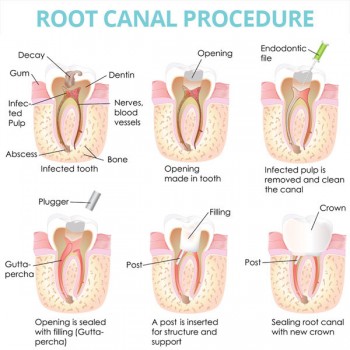Endodontic care involves treating the inside of teeth – specifically the root canal and its structures. In fact, endodontics is one of several dental specialties. While general dentists may perform this type of treatment, complex and advanced cases are normally referred to a specialist. As an endodontist, Dr. Lee has additional education, training, and certification to treat issues that affect the internal structures of teeth. The most common type of endodontic therapy involves treating infected and injured root canals.
Tooth Anatomy: The Root Canal
To understand the importance of root canal treatment, it’s best to have a basic understanding of tooth anatomy. Inside a tooth is a hollow chamber called the root canal. This area is home to the nerve endings of a tooth and dental pulp, which contains vital cellular material. When a tooth is healthy, the root canal and its contents are not exposed to harmful debris or oral bacteria, but when a tooth is damaged by a deep fracture or cavity, the nerve endings can become infected or inflamed along with the dental pulp. An infected root canal can produce very uncomfortable symptoms such as a nagging toothache or persistent sharp pain. Without professional treatment, the infection inside the tooth will ultimately kill its living tissues and may abscess.
Why Root Canal Therapy is Necessary
Treating an infected root canal means that the tooth can be saved from the infection killing its living material. Root canal therapy can also prevent the need for extraction, the surgical removal of a tooth. The goal of endodontic therapy is to remove the infected materials inside a tooth, clean the root canal, and then seal it. This is done using very precise tools and techniques. Once a tooth is developed and established, the nerves and pulp can be removed, which allows a patient to keep their biological tooth and enjoy comfortable oral function without discomfort.
Since nerve endings relay sensations of pain to the brain, removing an infected nerve will greatly improve a patient’s quality of life. Moreover, removing infected material inside the tooth will likely prevent the infection from spreading or forming an abscess.
Once the root canal’s infected material is removed and the area is cleaned of all debris, the inside of the tooth will be sealed with a rubber-like compound. Sealing the inside of the tooth helps prevent future problems while also protecting the structural integrity of the tooth.
To schedule an appointment with our caring and experienced endodontist, call our practice at (972) 471-0647.


